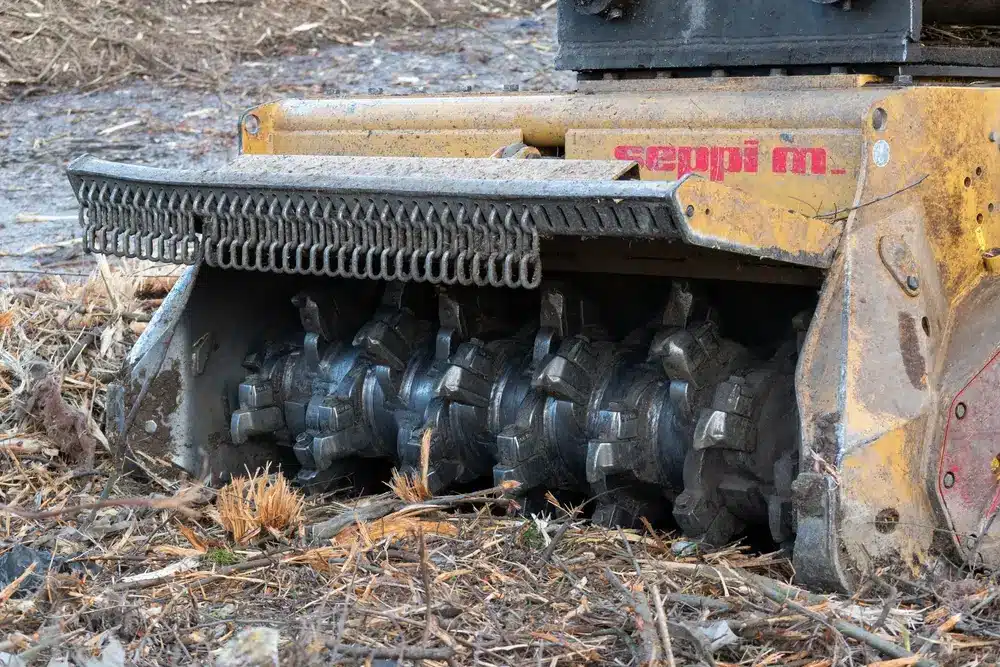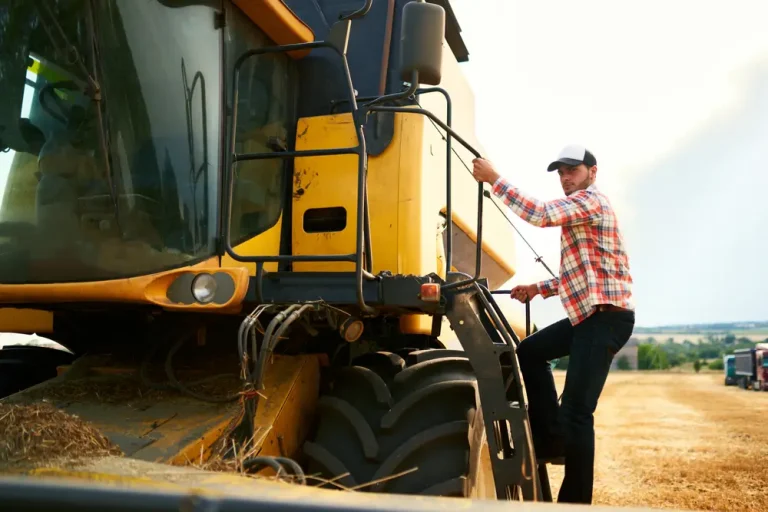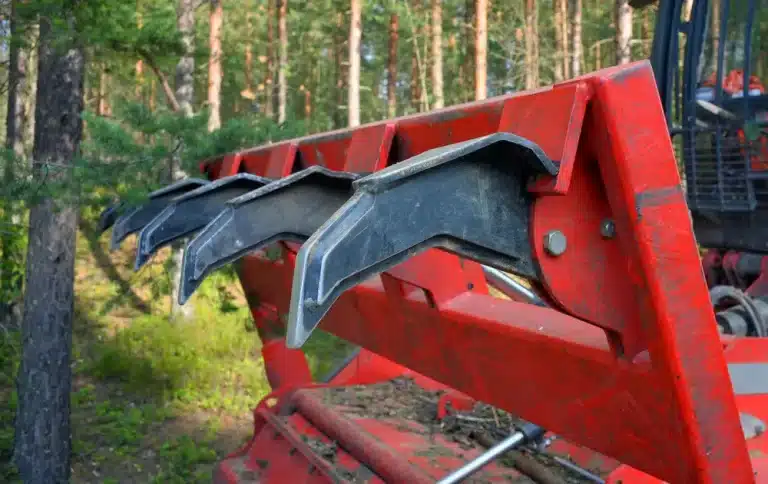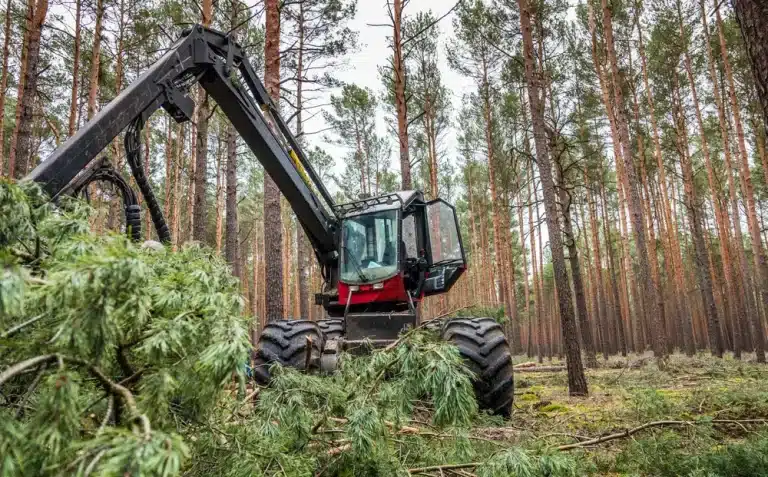Forestry mulcher: The must-have tool for landowners and contractors throughout the Toulouse region, where thick underbrush and invasive plants endanger precious forestland. With southwestern France’s special blend of Mediterranean and Atlantic ecosystems, controlling vegetation is more important than ever. Is a forestry mulcher a profitable investment or a money pit? So let’s get into the figures for Toulouse’s terrain.
What is forestry mulcher: profitable investment or money pit?
A forestry mulcher is a type of machinery designed to clear, shred and mulch any plants or trees on forest land. It can machete through brush, saplings, and even big trees, making it convenient for tasks where land must be cleared quickly and with fewer man-hours. The allure is the opportunity to earn some nice income, but there are legitimate hazards. They’re expensive, and the machine isn’t suitable for every task or location. How much you make or lose depends on your utilization, the size of the land, and your management of the job.
Forestry mulchers find use in many types of projects:
- Clearing land for new building or farming
- Keeping forest trails open or safe
- Stopping wildfires by making firebreaks
- Power line or pipeline right-of-way clearing
- Restoring habitats or parks
- Managing overgrown lots in cities
Operating a forestry mulcher business is no cakewalk. Many new owners go out of business a year. It turns a profit based on things such as the species and diameter of the trees. For example, mulching a 25-cm oak can take 14-30 minutes, dragging the job. The machines can be weighty — tracks alone can weigh in excess of 250 kg. If your trailer and gear exceeds 12,000 kg you may require a special truck license.
Expenses devour a large portion of your revenue. Fuel, which is a nice chunk at around 24%. Hose replacement, fixing breaks, buying new tracks is common—tracks last a year, hoses can last a few months. Additional fees like website fees and repairs accumulate. Things idle in winter, so you have to put away a few dollars during the frantic summer months. Still, there’s an opportunity to make good money, with some projects generating $5,000–$14,700 a month.
Why mulchers matter in long-term land value
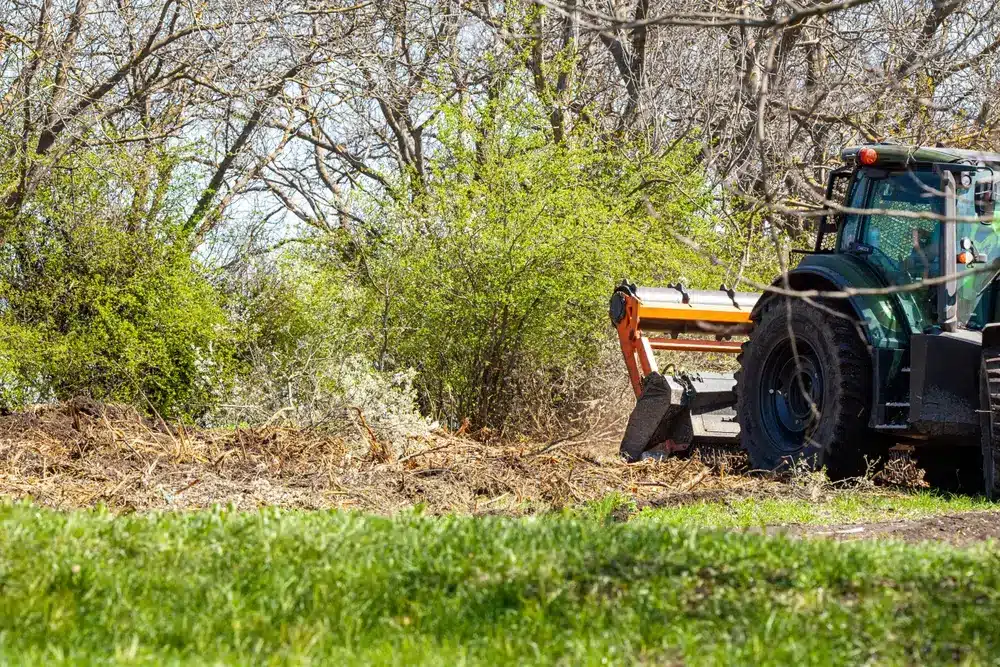
Forestry mulchers redefine land management. They cultivate enduring land value and nurture thriving habitats. These machines, when used correctly, maintain weed control and prevent soil erosion. Which translates into less cash out the door on weed sprays or repairing land post-rain. With improved soil and healthy plant roots, land maintains its value and can produce crops, trees, or grass year after year.
It costs a lot to buy or rent a forestry mulcher. Fuel and maintenance can devour nearly 25% of the cost. Parts like tracks and hoses wear out quick, with tracks sometimes only lasting a year and around $3,500 to replace. If a track breaks and you don’t have spares, work comes to a halt. Even one day lost can eat into profits. Maintenance and fuel, along with labor costs, can consume as much as 38 percent of the gross revenue. Being on top of bills and saving for slow months is crucial, as work typically slows down in winter.
On the flip side, the incoming cash flow can be nice. Clearing pine trees on a forestry mulcher can earn $20-$30 per pine tree and one job could earn you between $5,000-$14,700. These digits rely on the scale of the task, the difficulty of the trees, and the speed at which the mulcher can clear land. On average, one acre takes about three to seven days to complete.
Forestry mulchers can help you comply with regulations that safeguard the environment. They maintain forest’s health and assist landowners in compliance and sustainability objectives. Still, it’s prudent to consider both cash and all the great work for the earth before you dive in.
Real benefits of investing in a forestry mulcher
Forestry mulchers provide landowners and contractors a means to clear land quickly and manage brush or undergrowth. These machines cut, grind, and spread wood debris — in one step — which slashes labor hours and reduces costs for other equipment. Mulchers are instrumental in fire prevention by removing fuel-rich vegetation and deposing mulch that retains moisture in the soil. This renders them useful for a range of land management tasks.
- Reduce soil temperature swings, helping tree roots stay healthy
- Disc mulchers produce fine mulch that keeps moisture in the ground, reduces erosion
- One-step process saves time and money on labor
- Create habitats and food for birds, insects and small animals, increasing biodiversity
- Mulch is a natural barrier that suppresses weed growth and protects saplings.
- Drum mulchers can shred trees up to 20 cm thick, ideal for mixed forest.
- Less soil movement means less risk of erosion and loss of nutrients.
- It can improve timber production with healthier growth and reduced disease.
- Lower long-term management costs and higher profit margins
- Mulchers come in flavors suited to big or small jobs, which aids in fitting the right tool for the job.
Why the right mulcher matters. Drum, disc, and deck types all suit different tasks. Disc mulchers are great for creating fine mulch. Drum mulchers for larger trees up to 20cm in diameter. This decision impacts not only their productivity but their operating expenses.
This is a tough business to run. Insurance usually costs 10% of what you make, and just getting started will not translate into high profits immediately. You’ll succeed to the extent that you undercut the other guys by working more hours, charging lower rates, and keeping your costs down. For others, these challenges render it a gamble. For others, clever planning and matching the machine to the work can make it pay.
Different mulcher types and how they impact ROI
Forestry mulchers span different styles, each designed for a job type, terrain and plant size. Choosing the right type is not just about price—it’s about aligning your needs with the capabilities of the machine. Here’s a table that displays the different types, their characteristics, and what tasks they’re best suited for.
| Type | Features | Cost Range (USD) | Efficiency | Suitability |
| Drum Mulcher | Wide cut, strong teeth, good for thick brush | $30,000–$100,000 | High (dense areas) | Heavy brush, flat land |
| Disc Mulcher | Rotating disc, fast, can throw debris | $20,000–$80,000 | Very high (open land) | Small trees, open ground |
| Flail Mulcher | Chains or blades, lighter, easy to fix | $10,000–$40,000 | Medium (light brush) | Grass, vines, soft growth, slopes |
| PTO Mulcher | Runs off tractor, many sizes | $8,000–$60,000 | Varies by tractor | Farms, small wood, mixed terrain |
| Excavator Mulcher | Fits on excavator, reaches tough spots | $15,000–$90,000 | High (steep areas) | Slopes, ditches, hard-to-reach land |
Price is ONLY a piece of the story. Drum mulchers can chew up large jobs but they’re pricier upfront and require a robust carrier. Disc mulchers are quick for open, flat tasks but can be dangerous around people or roads due to flying debris. Flail mulchers are best suited in areas with light vegetation or on hillsides where large machinery can’t reach. PTO mulchers are convenient for farms, but their power is tied to your tractor. Excavator mulchers, they go where nothing else can, but require a master toque.
Selecting a mulcher that matches your work saves you both time and money. The wrong type bogs you down, kills the machine, and can even break it. Check out your property, what type of vegetation you’re clearing, and how rugged the terrain is before you purchase or rent.
Best practices for staying profitable
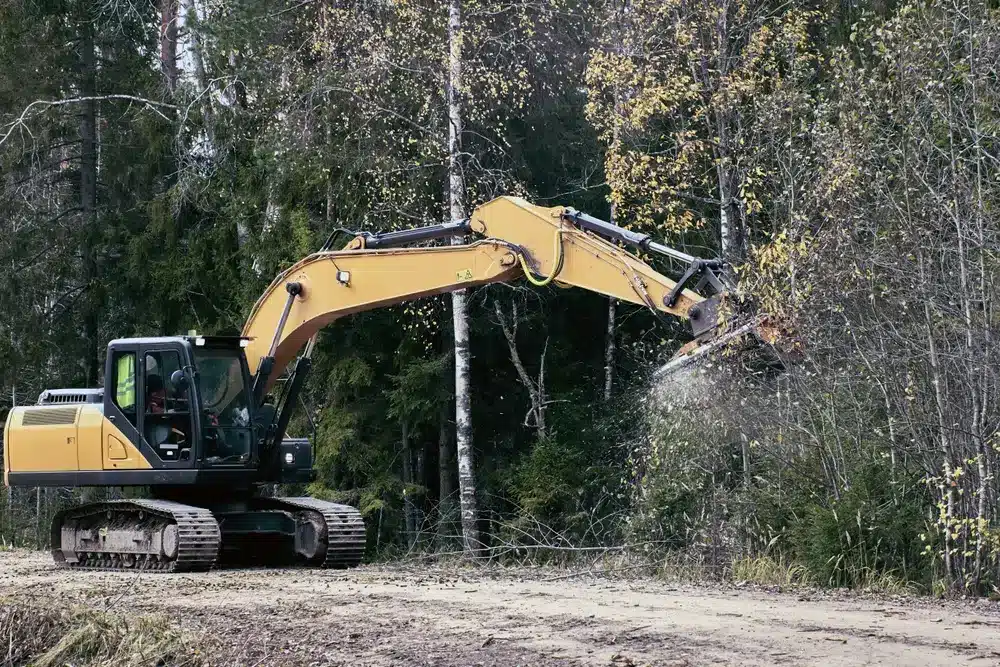
Forestry mulchers can pull in fair bit of money– some projects generate $5,000 apiece, and monthly revenue can hit $14,700. Still, expenses can sneak up. They can weigh more than 9,000 kgs, so you’ll need a big truck and possibly a CDL if it’s over 11,800 kg. Fuel accounts for roughly a quarter of operating costs, and you will need to replace hydraulic hoses frequently—these can run $50 a service. Tracks run out every year or 2, and they’re not inexpensive to replace. Mulching time depends on the job: a 25-cm oak tree takes 14–30 minutes, while a pine or cedar of the same size takes 5–14 minutes. Weather or repair downtime can snap off profits, sometimes halting work for days, sometimes a month. Operating costs can consume 37%–38% of your revenue, so putting aside a rainy day fund for lean months and unexpected fixes is simply wise.
Best practices help you keep profits up and costs down:
- Schedule work by tree diameter and acreage to price it right.
- Employ the correct truck and always verify weight limits to comply with transport regulations.
- Keep spare parts—tracks, hydraulic hoses—on hand to cut downtime.
- Plan regular inspections and repairs to extend your machine’s lifespan.
- Monitor the weather and have rain day jobs!
- Keep an eye on fuel costs, and seek out bulk or fuel card discounts.
- Look for local or national government grants to reduce your up-front investment.
- Try your business and gear for six months to see if it holds up long term.
- Save earnings during peak season to cover leaner months.
- Test soil and plant health post-mulching to ensure that you hit land objectives.
Common mistakes to avoid when entering the business
Forestry mulchers offer the hope of transforming land management into a reliable business, but errors can transform that dream into an expensive ordeal. The price tag upfront is high, often $60,000 to $250,000, so it makes sense to verify the machine suits your true longer-term needs. Purchasing without a plan, or even worse, without understanding the work ahead, is a great way to end up with idle machinery and money down the drain. Others dive in, assuming any tract will do, but not all sites are suitable for mulching. Taking a mulcher onto steep, rocky or wet ground puts the machine and the operator’s safety at risk. Always size the machine to the terrain and task.
Operator training is another thing people forget. Untrained users can injure, inefficiently work, or even accidently cause accidents. Training is more than safety—it impacts job quality and machine longevity. Others forego proper maintenance, but a mulcher that’s not maintained will breakdown, costing even more. Switching blades, checking fluids, and clearing debris are fundamental, but neglecting them can cause costly repairs.
Operating a mulching business requires strategy, not simply a piece of equipment. Determine if you’ll charge—hourly or by the job—as this affects your potential income. Follow running costs such as fuel, oils and parts. These expenses accumulate and can erode margins if not monitored carefully. Always choose quality over rock bottom price. A well-crafted machine has more longevity and does a better job–saving money in the long term.
It’s easy to skip research or skimp on the buying process. It pays to talk with other owners, read reviews, and match machine to work.
How to measure long-term success
Success with a forestry mulcher is measured in changes on the ground. Begin by timber yield. Before mulching, measure how much wood you harvest from the land! After mulching, track new growth and compare volumes annually. If you notice more or higher-quality timber in less time, that’s another indication the mulcher is worth it. Let’s say a hectare produced you 10m3 of saleable wood pre and 13m3 post, two years later, that’s immediate validation of worth.
Land management costs figure heavily into the calculus. Record what you pay for weed control, bush clearing, and erosion repair annually. Mulchers tend to slash these jobs, so you’re paying for less labor, less chemical and less machine time. If weed spraying goes from four times a year to once, or you sink less into repairing washed out paths, it adds up. Total costs three years before and after you begin using the mulcher.
Soil health and biodiversity are critical, particularly for long-term profits. Use basic soil tests to look for increased organic matter or improved water holding. Others bring in wildlife biologists annually to tally bird or bug species, hoping for an increase post-mulching. When soil nutrients increase and birds increase in number it’s a sign the land is healing faster.
Establish benchmarks prior to purchasing. Determine how much more timber, how much less cost, or how much better the land should be to make the mulcher a win. Allow yourself 3-5 years to follow these numbers, checking them each season.
